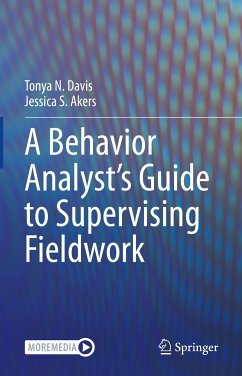This guide is specifically designed for supervisors of trainees completing fieldwork requirements for the Board-Certified Behavior Analyst (BCBA) credential, to ensure a well-planned and well-documented fieldwork experience. Supervisors have a significant responsibility to plan, sequence, implement, and track their supervisee's fieldwork and skill acquisition. This guide was created to align with the Board-Certified Behavior Analyst Task List, providing a structured curriculum to support the many responsibilities of a supervisor, and covering a wide range of topics.
The book includes instructions for group and individual supervision activities, homework activities for supervisees, and methods of assessing skills. It is designed to support the supervisor by covering all aspects key to supervision. Its many additional materials are designed to maximize the supervisor's use of time, and to gauge the effectiveness of their work. It is evidence-based and practically oriented, and will benefit the supervisor as well as the trainee.
Dieser Download kann aus rechtlichen Gründen nur mit Rechnungsadresse in A, B, BG, CY, CZ, D, DK, EW, E, FIN, F, GR, HR, H, IRL, I, LT, L, LR, M, NL, PL, P, R, S, SLO, SK ausgeliefert werden.


